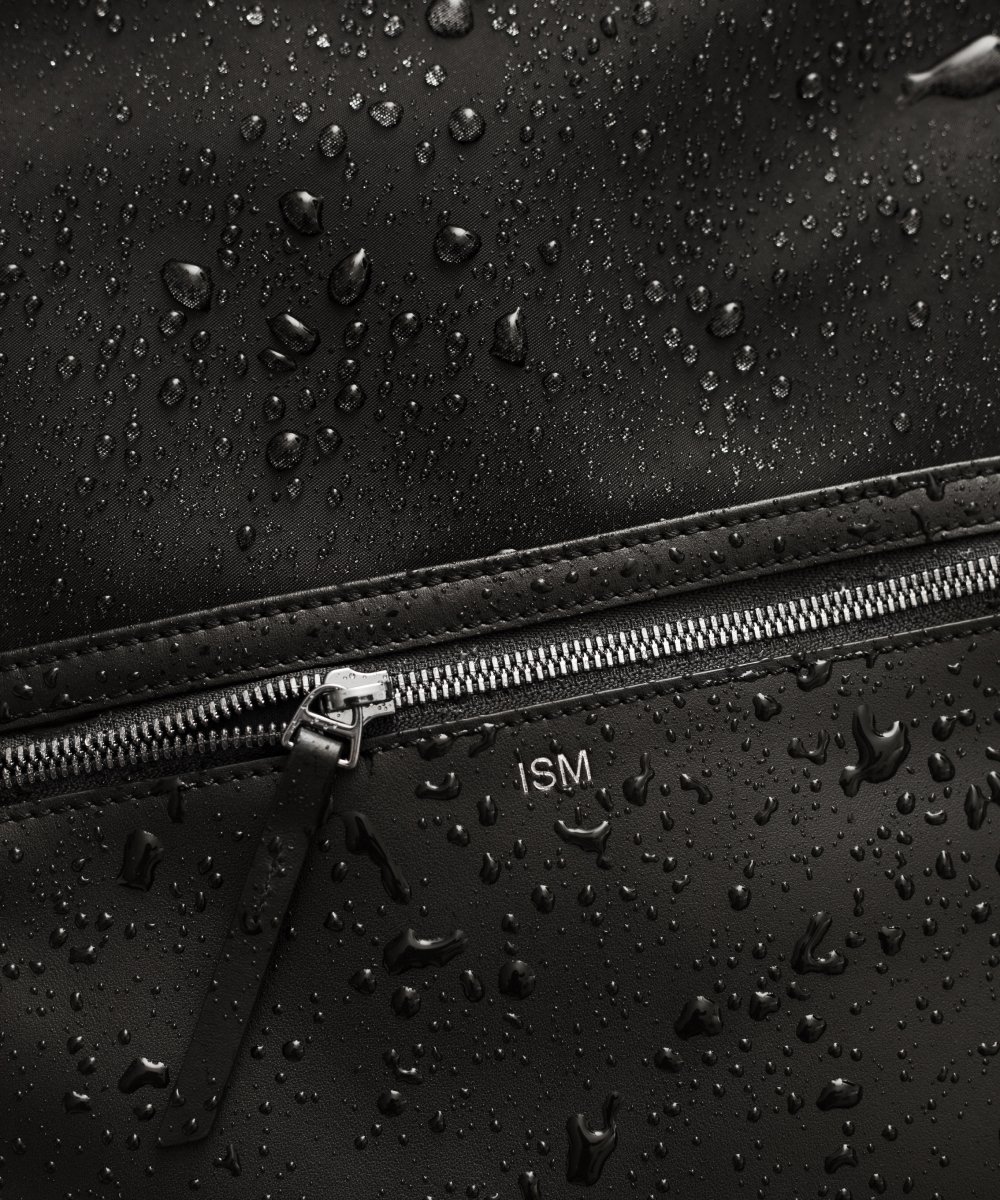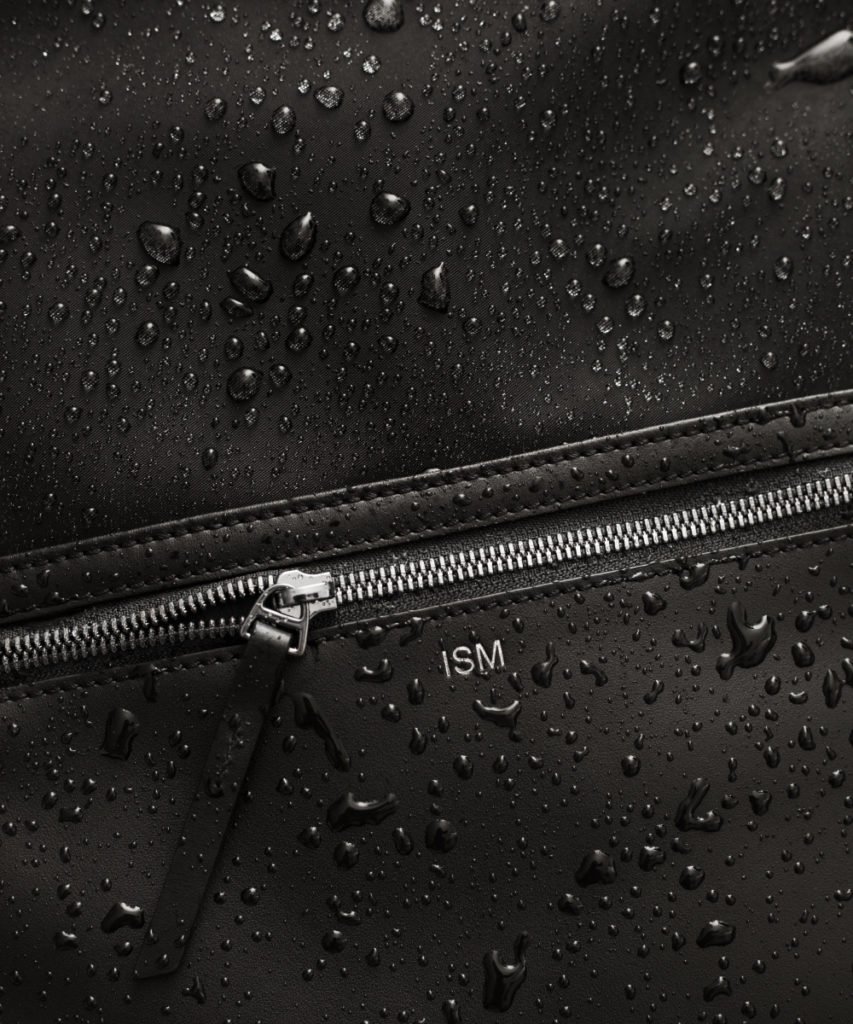
When you’re looking for a new work bag, an essential feature is the bag’s durability. Whether you’re commuting to work or on the road again, you want to be prepared for any situation.
Just like how the different grades of leather can have some confusing terminology, the same can be said about a product’s water-resistant properties. Oftentimes, the terms “waterproof”, “water repellent”, and “water resistant” are used interchangeably, when in reality, each term has a pretty different meaning.
Here’s a TL;DR — waterproof products can be completed submerged in a pool of liquid without suffering any leakage. Water-repellent goods are made with technical materials that repel water, like a Gore Tex jacket. Something that is water-resistant will keep your belongings safe in a drizzle, but probably isn’t ideal if you’re stuck in a heavy thunderstorm without an umbrella.
Here are some things to consider in detail:
What’s Water-Resistant?
A water-resistant bag is better than a non-resistant bag at protecting your valuables. The downside is that it’s the least effective of all three waterproofing options. If you’re looking for an ultra durable bag that you can take to the mountains, you’ll probably want to look for something more technical.
The main upside to choosing a bag that is water-resistant instead of water-repellent or water-proof is that water-resistant bags (like the ISM Backpack) can be constructed with a wider variety of materials like leather, nylon, canvas, or polyester. To get the water-resistant property, these bags have a layer of a special coating added that helps to repel water.
What’s Water-Repellent?
Water repellent bags are the next step up if you need more water protection. While a water resistant bag can work well in a light drizzle, a water repellent bag can work in a heavy storm.
Most bags classified as “Water Repellent” are made of tightly woven fabric that is similar to, or stronger than, the weave on a water resistant bag. It is usually more effective at eliminating any microscopic holes, which gives off the appearance of water being literally ‘repelled’ from the material’s surface.
The downside is that because of their water-repellent properties, they can only be made with a limited range of technical materials, meaning that more wearable fabrics like leather, nylon, or canvas can’t be used.
What’s Waterproof?
A waterproof bag is reserved for bags that can withstand extreme downpours and complete underwater submersion. Many of these bags are made by companies that specialize in outdoor wear, like Patagonia or The North Face. Fashion and style options in a waterproof backpack are secondary to their utilitarian function — including the way that the bag is constructed.
Most waterproof bags will also have a roll-top closure. This allows manufacturers to get rid of zippers, which are a liability even if they are waterproof due to the holes they can create. This type of closure is often useful in hiking or backpacking gear.
Consider The Trade Offs
The tradeoff between form and function lies in the materials and construction – any seams between fabric can create opportunities for water to seep in.
The restrictions put in place to eliminate every possible drop of water means that your design options are limited with waterproof or water-repellent bags. If you only intend to use your bag in a drizzle or even a heavy downpour, this is probably a bit of an overkill.
The Best of Both Worlds — Waterproof Zippers
One of the biggest differences when it comes to a waterproof vs resistant vs repellent backpack is the zipper. Most water-resistant and repellent bags use a non-waterproof zipper, leaving gaps that can allow small amounts of water to leach in.
Instead of compromising on form or function, we used a mixture of water-resistant and water-proof materials in the ISM Backpack. The water-resistant coated full-grain leather and nylon exterior keeps the essentials in your main compartment safe from a drizzle, while the water-proof zipper guarantees that your laptop and tech don’t get wet. Another plus is that it blends in with the bag’s design keeping it minimal and discreet.
By using a regular metal zipper for the main compartment and front pocket, the bag keeps its minimal and stylish appearance, compared to a bag that uses only water-proof zippers.
What Works For You?
Though a stylish, affordable, light, and fully waterproof backpack is ideal, it’s rare to encounter and unnecessary to seek. Water-resistant backpacks with special zippers and materials can offer you nearly identical coverage in a heavy downpour, and they come with a more versatile design aesthetic.
It turns out that you don’t have to sacrifice form and function.
Yes, you can have your cake and eat it too.
